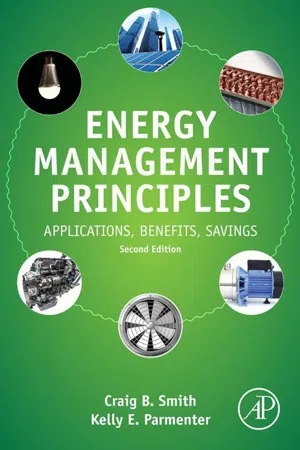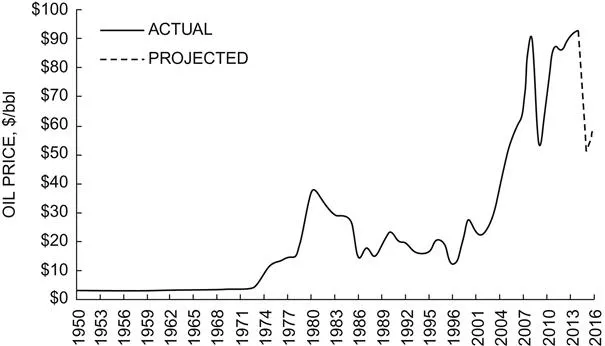
Energy Management Principles
Applications, Benefits, Savings
- 430 pages
- English
- ePUB (mobile friendly)
- Available on iOS & Android
About this book
Energy Management Principles: Applications, Benefits, Savings, Second Edition is a comprehensive guide to the fundamental principles and systematic processes of maintaining and improving energy efficiency and reducing waste.Fully revised and updated with analysis of world energy utilization, incentives and utility rates, and new content highlighting how energy efficiency can be achieved through 1 of 16 outlined principles and programs, the book presents cost effective analysis, case studies, global examples, and guidance on building and site auditing.This fully revised edition provides a theoretical basis for conservation, as well as the avenues for its application, and by doing so, outlines the potential for cost reductions through an analysis of inefficiencies.- Provides extensive coverage of all major fundamental energy management principles- Applies general principles to all major components of energy use, such as HVAC, electrical end use and lighting, and transportation- Describes how to initiate an energy management program for a building, a process, a farm or an industrial facility
Frequently asked questions
- Essential is ideal for learners and professionals who enjoy exploring a wide range of subjects. Access the Essential Library with 800,000+ trusted titles and best-sellers across business, personal growth, and the humanities. Includes unlimited reading time and Standard Read Aloud voice.
- Complete: Perfect for advanced learners and researchers needing full, unrestricted access. Unlock 1.4M+ books across hundreds of subjects, including academic and specialized titles. The Complete Plan also includes advanced features like Premium Read Aloud and Research Assistant.
Please note we cannot support devices running on iOS 13 and Android 7 or earlier. Learn more about using the app.
Information
Introduction
Abstract
Keywords
Introduction

Table of contents
- Cover image
- Title page
- Table of Contents
- Copyright
- Dedication
- List of Figures
- List of Tables
- Foreword to the First Edition
- Preface
- Acknowledgments
- Chapter 1. Introduction
- Chapter 2. Catalysts for Energy Management
- Chapter 3. General Principles of Energy Management
- Chapter 4. Planning For Energy Management
- Chapter 5. Understanding Utility Rates and Programs
- Chapter 6. Building and Site Energy Audits
- Chapter 7. Energy Analysis
- Chapter 8. Management of Heating and Cooling
- Chapter 9. Lighting Management
- Chapter 10. Transportation
- Chapter 11. Management of Process Energy
- Chapter 12. Integrated Building Systems
- Chapter 13. The Economics of Efficient Energy Use
- Chapter 14. Implementation and Continuous Assessment
- Appendix A. Abbreviations, Symbols, and Units
- Appendix B. Units and Conversion Factors
- Appendix C. Energy Management Data
- Index